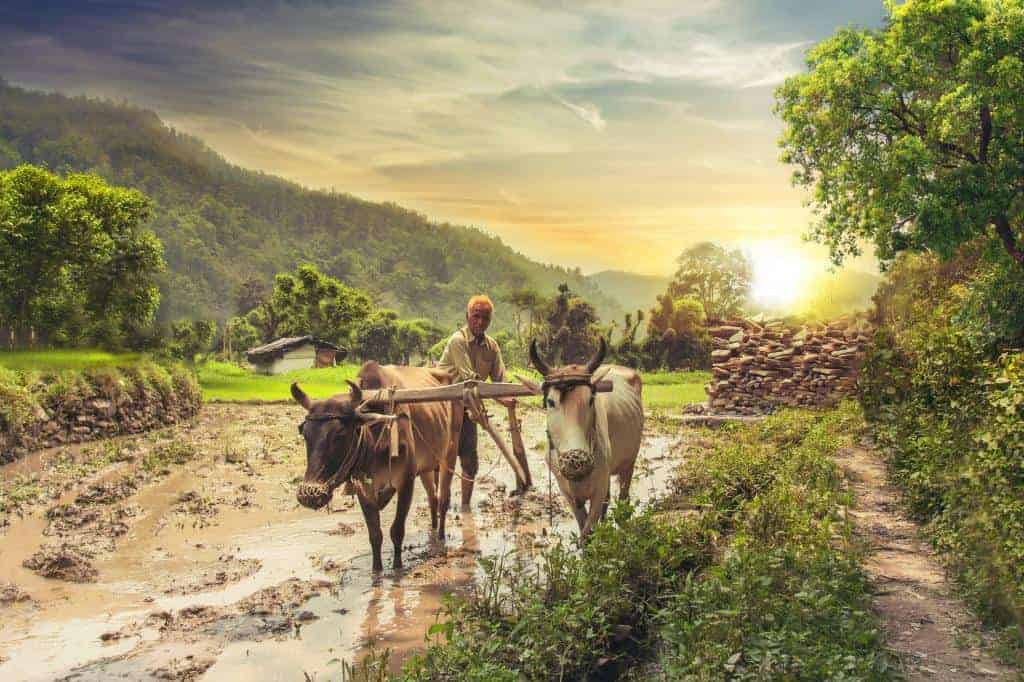
For the First Time, Farm Sector Set to Grow even as GDP sees a Contraction
The first quarter of 2020-21 (April-March) may turn out differently.
Most investment banks and rating agencies are predicting the economy to shrink this fiscal, with the Reserve Bank of India’s latest survey of professional forecasters pointing to a median estimate of minus 5.8%. The first quarter especially, which bore the brunt of lockdown-induced production disruptions, is expected to record huge de-growth based on a host of indicators. These include the index of industrial production (down 35.9% in April-June 2020 over April-June 2019), commercial vehicle sales (minus 84.8%), finished steel consumption (minus 55%) and cargo handled by major ports (minus 19.7%).
| IE EXPLAINED — Could be historic, not desirable India’s growth fortunes have been tethered to agriculture. All years of GDP contraction, the last one in 1979-80, were farm sector-led. April-June 2020 could be the first time when the economy will shrink despite agriculture notching up decent growth. It would be historic if this extends to the rest of the fiscal. But it would not be desirable — agriculture can only support, not lead, growth. |
The farm sector, however, is set to post positive year-on-year growth. The first quarter agricultural GDP incorporates production from the rabi season, which ends with harvesting in April-June. The Agriculture Ministry has pegged output of wheat, chana and other rabi foodgrains this time at 151.72 million tonnes (mt), 5.6% higher than last year. While that of oilseeds (mainly mustard) fell 3.2% to 10.49 mt, most rabi horticultural crops – from onion, tomato, gourds, beans and jeera to mango, grapes and watermelon – have shown increases. Perhaps the only exception is potato. Crops, including fruits and vegetables, account for roughly 56% of gross value added from agriculture, with the rest coming from livestock products (29%) and forestry & fisheries (15%). The entire farm sector had an estimated 14.6% share of India’s GDP at constant prices in 2019-20.
The crop sub-sector is likely to have grown by at least 4-5% in April-June on the back of recharged groundwater tables from very good rains and an extended winter that boosted yields. The performance of the other two sub-sectors may be mixed. Rahul Kumar, CEO of the private dairy company Lactalis India, feels milk production in the last quarter was significantly higher than a year ago.
“In 2019, we had drought conditions in Maharashtra and large parts of the South until mid-July, due to which procurement prices of cow milk rose from Rs 20-21 to Rs 30-31 per litre between February and October. But as the monsoon revived and it rained well thereafter, there was improvement in fodder availability and also milk supplies from around this March,” he said.
This may not be so in poultry and fish.
According to Balram Singh Yadav, managing director of India’s largest animal feed manufacturer Godrej Agrovet Ltd, production of broilers and eggs were lower by 35-40% and 15-20% respectively during April-June 2020 compared to last year. The reason was a collapse of farm-gate prices, which began from late January with rising Covid-19 cases in China and rumours linking the spread of the virus to the consumption of poultry products. Farmers were forced to cull birds, the effects of which were felt in the subsequent quarter.
Fisheries production fell during April-June due to a lack of demand after the lockdown. This was compounded by labour shortage in seafood units that process harvested shrimp and fish. “Farmers left their ready-to-harvest fish in the ponds. There was hardly any harvesting until early June, and even the placement of new seedlings started after mid-July after a delay of 45-50 days,” Yadav said. Meat production, too, would have taken a hit from the closure of slaughterhouses and wet markets.
On the whole, the agriculture sector would have grown by a minimum 3-4% in real terms during the first quarter of 2020-21, even as overall GDP may contract by double digits. For farmers, of course, agricultural growth in nominal terms, after adding inflation, is what matters.
The destruction of demand due to the closure of eateries and ban on social functions led to prices of milk and most horticultural produce crashing in April-June. Annual wholesale price index inflation during the quarter averaged 2.5% for food, and minus 3.2% for non-food agricultural products. Nominal agricultural growth, in fact, would not have been very different from real growth.
Dairies are currently paying farmers Rs 18-20 per litre for cow milk. Yadav sees these prices – for India’s largest farm commodity by volume and value – affecting production from January-March 2021, or the subsequent quarter. “Supply adjustments happen with a lag. Farmers reduced broiler and egg production in April-June and prices recovered that quarter. The impact of farmers underfeeding their animals now will be felt next year, when demand would have returned. We are already seeing fish prices going up,” he said.
